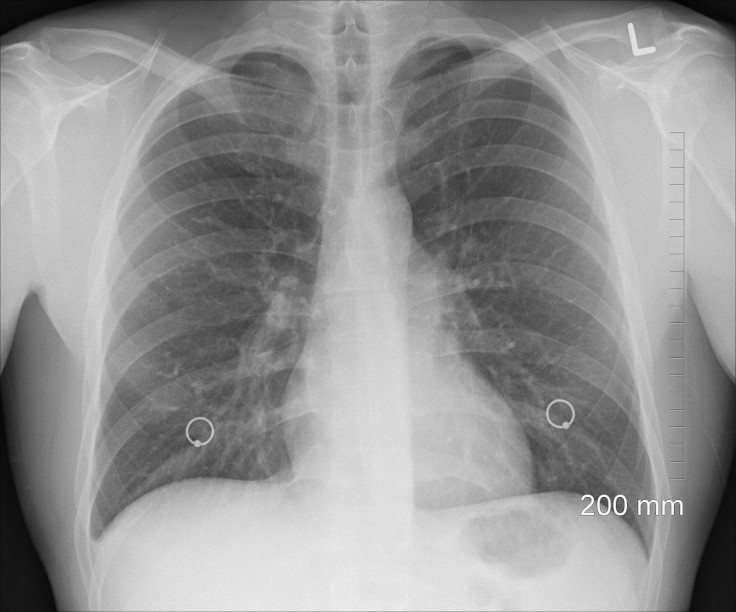Some COVID-19 Survivors' Lungs 'Worse' Than Those Of A 'Terrible' Smoker, Texas Doctor Says
KEY POINTS
- The doctor says even asymptomatic patients sometimes show "severe" chest X-ray results
- Even those who may feel fine now may experience problems in the future
- It may take some time before COVID-19 survivors regain full lung capacity
A Texas-based doctor, who has been treating coronavirus patients for months, says the lungs of some COVID-19 survivors appear more damaged than those of a smoker. She says even asymptomatic patients' X-rays show lung issues.
COVID-19 has taken a lot of lives but even those who survived the virus may have some long-term effects on their health. In a tweet, trauma surgeon Dr. Brittany Bankhead-Kendall compared post-COVID lungs to smokers' lungs.
"I don't know who needs to hear this, but 'post-COVID' lungs look worse than any type of terrible smoker's lungs we've ever seen," the doctor tweeted earlier this month. "And they collapse. And they clot off. And the shortness of breath lingers on… & on… & on."
I don’t know who needs to hear this, but “post-Covid” lungs look worse than ANY type of terrible smoker’s lungs we’ve ever seen.
— Brittany K. Bankhead MD (@BBankheadMD) January 4, 2021
And they collapse. And they clot off.
And the shortness of breath lingers on... & on... & on.
Bankhead-Kendall said patients with coronavirus symptoms showed a "severe" chest X-ray, CBS Dallas-Fort Worth reported. Even those who were asymptomatic also had severe chest X-ray results "70 to 80% of the time," she told the outlet.
In an image Bankhead-Kendall shared with the outlet, a healthy person's lungs, a smoker's lungs and a post-COVID-19 lungs can be seen. The healthy lungs have a lot of black areas, which indicate air, while the smoker's and the post-COVID-19 lungs have a lot of white marks, which she said are signs of congestion and scarring. The COVID-19 patient's lungs appear to have much more white marks than that of the smoker's lungs.
Post-COVID lungs worse than the worst smokers' lungs, surgeon says https://t.co/VJM9Nf0GIH
— CBS News (@CBSNews) January 14, 2021
"And if you're not feeling problems now the fact that that's on your chest X-ray it sure is indicative of you possibly having problems later on," Dr. Bankhead-Kendall told the outlet.
Actress Alyssa Milano, who previously tested positive for COVID-19 antibodies even after three negative tests, also tweeted an image this week comparing the blood vessels of a healthy person's lungs with her lungs and the lungs of someone who died after contracting COVID-19.
"As a long hauler, I have less blood vessels than pre-covid. We don't know if they will come back," Milano said in the tweet.
The photo on the left are healthy lungs. You can see all the colorful blood vessels. The center pic is actually *my* lungs. As a long hauler, I have less blood vessels than pre-covid. We don’t know if they will come back. The right are lungs of someone who passed away from covid. pic.twitter.com/z9Mc0rR1fP
— Alyssa Milano (@Alyssa_Milano) January 14, 2021
According to the National Institutes of Health (NIH), the virus and the immune system's reaction to it cause damages to the air sacs in the lungs, leading to scarring and stiffening. When this happens, some of the oxygen going to the bloodstream gets blocked and the patients experience shortness of breath.
Though many things still remain unknown about COVID-19 and its effects, there has been evidence that some COVID-19 patients continue to have abnormal lung scans even months after leaving the hospital, NIH Director Dr. Francis S. Collins said in a Director's Blog, citing a study conducted in China.
It is still not clear how the long-term recovery will look like for COVID-19 survivors, but it appears that it may take a while before they can regain their pre-COVID lung function.
"As we learn even more about the underlying causes and long-term consequences of this new infectious disease, let's hope it will soon lead to insights that will help many more COVID-19 long-haulers and their concerned loved ones breathe easier," Dr. Collins said.

© Copyright IBTimes 2024. All rights reserved.






















